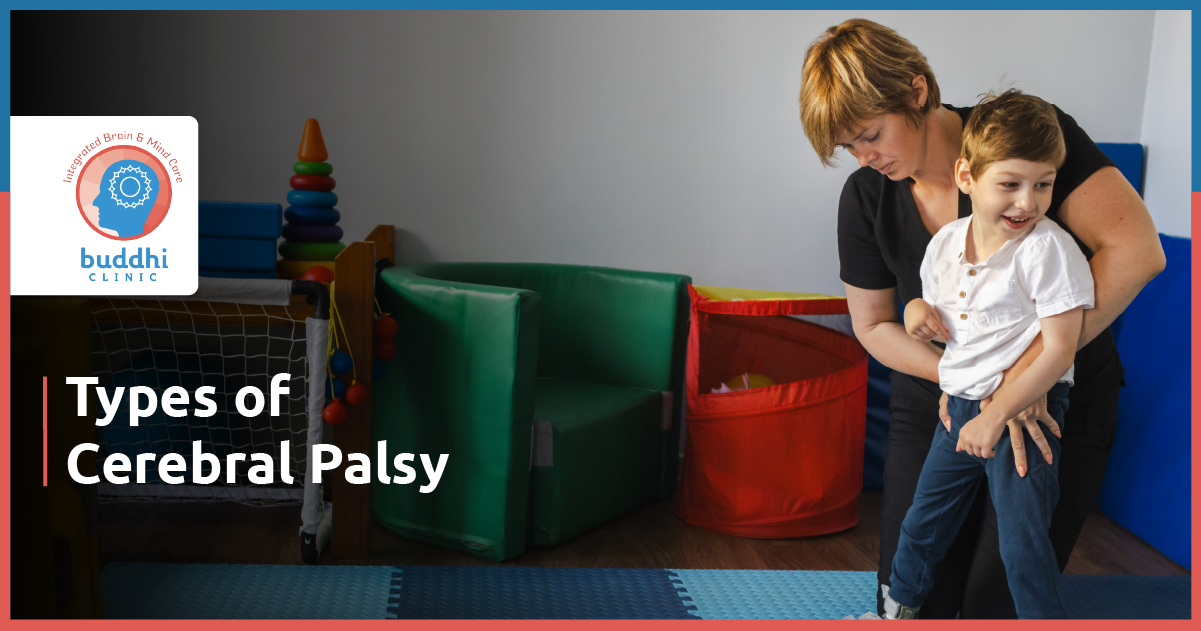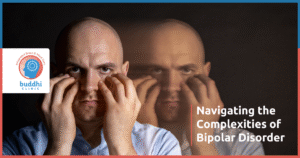Cerebral palsy (CP) is a neurological disorder that impacts movement, muscle tone, and coordination. It is caused by damage to the developing brain, often occurring before, during, or shortly after birth. This condition can vary significantly in its severity, and the type of cerebral palsy an individual has plays a crucial role in determining their specific challenges and treatment needs. Understanding the different types of cerebral palsy is essential for proper diagnosis, treatment, and management of the condition.
What is Cerebral Palsy?
Cerebral palsy is a lifelong condition that affects the brain’s ability to control muscles and movement. The damage to the brain’s motor control centres can occur during pregnancy, childbirth, or shortly after birth due to various factors such as infections, lack of oxygen, or head trauma. The severity and range of symptoms can vary widely among individuals, making each case unique. There are several types of cerebral palsy, each characterized by distinct patterns of motor impairment and symptoms.
Types of Cerebral Palsy
1. Spastic Cerebral Palsy
Description
Spastic cerebral palsy is the most common type, affecting approximately 70-80% of individuals with CP. It is characteriSed by increased muscle tone, which leads to stiff and jerky movements.
Subtypes
Spastic Diplegia: Primarily affects the legs, causing difficulty in walking. Arm movements may be less affected.
Spastic Hemiplegia: Affects one side of the body, with the arm typically more affected than the leg. Children with this subtype may have delayed walking and may walk on their tiptoes.
Spastic Quadriplegia: The most severe form of spastic CP, affecting all four limbs, the trunk, and the face. Individuals may have difficulty walking, talking, and swallowing.
Symptoms
Common symptoms include muscle stiffness and tightness, exaggerated reflexes (hypertonia), difficulty with fine and gross motor skills, and joint contractures due to prolonged muscle tightness.
2. Dyskinetic Cerebral Palsy (Athetoid)
Description
Dyskinetic CP, also known as athetoid CP, is characterized by involuntary, uncontrolled movements. These movements can be slow and writhing (athetosis) or rapid and jerky (chorea).
Symptoms
Individuals with dyskinetic CP often have difficulty with coordinating voluntary movements, leading to problems with activities such as writing or grasping objects. Other symptoms may include difficulty with speech and swallowing, as the muscles of the face and tongue are affected. Muscle tone can fluctuate from too tight to too loose, contributing to the unpredictability of movements.
3. Ataxic Cerebral Palsy
Description
Ataxic CP is the least common type, affecting approximately 5-10% of individuals with CP. It primarily impacts balance and coordination.
Symptoms
Symptoms include shaky or unsteady movements (tremors), difficulty with precise movements such as writing or buttoning a shirt, and challenges with balance and walking (ataxia). Individuals may also have trouble with quick or fine movements and may appear uncoordinated or clumsy.
4. Hypotonic Cerebral Palsy
Description
Hypotonic CP is characterized by low muscle tone, resulting in floppy limbs and reduced muscle strength.
Symptoms
Common symptoms include difficulty maintaining posture, delayed motor skills development, and challenges with controlling head movements. Infants with hypotonic CP may have trouble feeding and may exhibit a “floppy” appearance due to decreased muscle tone.
5. Mixed Cerebral Palsy
Description
Mixed CP occurs when an individual exhibits symptoms of more than one type of CP. This is often the result of multiple areas of brain damage.
Symptoms
The symptoms of mixed CP vary depending on the combination of types present. For example, an individual may have both spastic and dyskinetic symptoms, leading to a mix of muscle stiffness and involuntary movements.
Diagnosis and Treatment
Diagnosing cerebral palsy typically involves a comprehensive evaluation by a medical professional. This evaluation includes a detailed medical history, physical examination, and various diagnostic tests such as MRI or CT scans to assess brain structure. Early diagnosis is crucial for effective treatment and management of the condition.
Treatment Options
Physical Therapy
Physical therapy aims to improve movement, strength, and mobility through exercises and activities tailored to the individual’s needs. Therapists work on building muscle strength, enhancing coordination, and improving balance.
Occupational Therapy
Occupational therapy focuses on helping individuals develop the skills needed for daily living and independence. This may include activities to improve fine motor skills, such as writing, dressing, and eating.
Speech Therapy
Speech therapy addresses difficulties with speech and swallowing. Therapists work on improving communication skills and may use alternative communication methods if necessary.
Medications
Medications may be prescribed to manage symptoms such as muscle stiffness, seizures, and pain. Common medications include muscle relaxants, anticonvulsants, and pain relievers.
Surgical Interventions:
In some cases, surgery may be necessary to correct deformities, reduce muscle tightness, or improve mobility. Procedures may include tendon release, joint stabilization, and spinal surgeries.
Living with Cerebral Palsy
Living with cerebral palsy presents unique challenges, but with the right support and resources, individuals can lead fulfilling lives. Early intervention and a comprehensive treatment plan tailored to the individual’s needs are crucial for improving quality of life.
Support and Resources
1. Educational Support
Children with cerebral palsy may require special education services to address learning challenges. Individualised Education Programs (IEPs) can provide tailored support and accommodations.
2. Assistive Devices
Various assistive devices, such as wheelchairs, walkers, and communication aids, can enhance independence and improve daily functioning.
3. Support Groups
Support groups offer a sense of community and provide valuable information and encouragement for individuals with cerebral palsy and their families.
4. Respite Care
Respite care provides temporary relief for caregivers, allowing them to take a break while ensuring the individual with CP receives proper care and attention.
5. Counselling and Mental Health Support
Counselling and mental health support are important for addressing the emotional and psychological challenges associated with living with CP. Therapy can help individuals and their families cope with stress, anxiety, and depression.
Why Choose Buddhi Clinic for Cerebral Palsy?
At Buddhi Clinic, we specialise in neuropsychiatric disorders, offering integrated brain and mind care across all ages. Our comprehensive program combines modern science with holistic approaches, including brain stimulation, psychological therapy, Ayurveda, yoga, cognitive stimulation, naturopathy, and physical, occupational, and speech therapy.
With 15 non-invasive brain stimulators and a multidisciplinary team under one roof, we provide unparalleled care tailored to your unique needs. Choose Buddhi Clinic for a holistic healing experience that nurtures your mind, body, and spirit.
Conclusion
Cerebral palsy is a complex and multifaceted condition that requires a comprehensive and individualized approach to diagnosis and treatment. Understanding the different types of cerebral palsy is essential for providing appropriate care and support. With early intervention, tailored treatment plans, and ongoing research, individuals with cerebral palsy can achieve their full potential and lead fulfilling lives. If you or someone you know is affected by cerebral palsy, seeking professional help and support is crucial for managing the condition and improving the quality of life.
FAQs
1. How is cerebral palsy diagnosed?
Cerebral palsy is diagnosed through a comprehensive evaluation by a medical professional, including a detailed medical history, physical examination, and possibly imaging tests such as MRI or CT scans.
2. What treatment options are available for cerebral palsy?
Treatment options include physical therapy, occupational therapy, speech therapy, medications, and surgical interventions to manage symptoms and improve quality of life.
3. Can cerebral palsy be cured?
Cerebral palsy cannot be cured, but with early intervention and a comprehensive treatment plan, individuals can manage symptoms and improve their quality of life.
4. Is cerebral palsy a progressive condition?
No, cerebral palsy is not progressive; the brain damage does not worsen over time. However, symptoms and complications may change with age.
5. Can people with cerebral palsy live independently?
Yes, many individuals with cerebral palsy can live independently, depending on the severity of their condition and the support systems in place.





